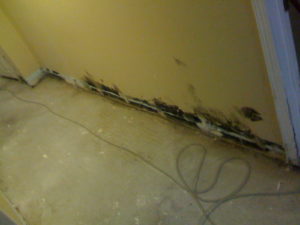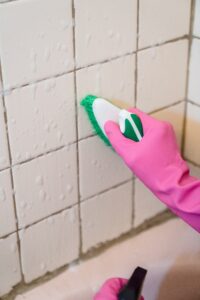Key Inspection and Repairs for Water Stains on Walls
Key Inspection and Repairs for Water Stains on Walls
Blog Article
Everyone maintains their unique assumption involving How to Remove Water Stains from Walls and Ceilings.

Water spots on walls are not pleasant to the eyes. Your residence ought to be without spots on the walls, roof covering, or floors. That is the ideal state of a home and also its structures. Yet, sometimes it appears practically unpreventable to experience water spots on walls in residences.
Homeowners living in moist areas continuously deal with the anxiety of water stains on walls. With precise as well as all-round info on the reasons of water spots as well as timely repair service procedures, you will always be a step ahead of such occurrences.
3 Common Causes of Water Stains on Wall Surfaces
Unlike common belief, water discolorations on wall surfaces do not constantly come from poor building materials. There are several sources of water discolorations on wall surfaces. These consist of:
Poor Drain
When making a building plan, it is crucial to make sure appropriate drain. This will prevent water from permeating right into the walls. Where the drainage system is clogged or missing, below ground wetness builds up. This web links to too much dampness that you discover on the walls of your building.
The leading reason of damp walls, in this instance, can be a bad drainage system. It can additionally be because of poor monitoring of sewage pipelines that run through the structure.
Moist
When hot wet air consults with dry cool air, it triggers water beads to base on the walls of structures. When there is steam from food preparation or showers, this occurs in shower rooms and kitchen areas. The water droplets can tarnish the surrounding walls in these parts of your residence and infect other locations.
Damp or condensation influences the roof as well as wall surfaces of buildings. When the wall is damp, it creates an appropriate setting for the growth of fungi and also microbes.
Pipe Leaks
The majority of homes have a network of water pipes within the wall surfaces. This makes certain that the pipes are faraway from the reach of devastating rodents. It always boosts the stability of such pipes, as there is little oxygen within the walls. This prevents corrosion.
A drawback to this is that water leak influences the walls of the building and triggers extensive damages. A dead giveaway of faulty pipes is the appearance of a water tarnish on the wall.
Water Spots on Wall Surface: Repair Tips
When dealing with water spots, home owners would generally want a fast solution. Yet, they would soon recognize this is disadvantageous as the water stains repeat. So, right here are a few useful tips that will guide you in the repair of water stains on wall surfaces:
Pro Pointer
A houseplant in your home additionally boosts its moisture. If the home is already moist, you might want to present houseplants with very little transpiration. An example of ideal houseplants is succulents.
Final thought
No one wants to have water discolorations on wall surfaces in their home, it can take place to the finest of us. This article provides you utilize, as you currently know just how to handle this problem if it does happen.
It is always best to hire specialist services to help deal with the problems in your home.
Sometimes it appears virtually unpreventable to experience water spots on walls in residences.
In contrast to prominent belief, water discolorations on walls do not constantly stem from bad building products. There are a number of causes of water discolorations on walls. The water droplets can tarnish the surrounding walls in these components of your home and also spread to various other areas.
Below are a few helpful pointers that will guide you in the repair service of water stains on wall surfaces:
CHECKING FOR WATER DAMAGE
Water damage can be costly, and it may begin before you even notice the first signs of trouble. Water damage can cause mold and mildew in your walls and floors, which can create an abundance of health concerns for your family. It can also lead to costly repairs of various appliances and general home fixtures. To avoid the pricey consequences of water damage, here are Warner Service s top 5 places you should check:
The walls The easiest place to spot the beginnings of water damage is on the walls and ceilings of your home. If water damage is present, there will most likely be water stains, especially around the windows and doorframes, and/or cracks in the drywall. If a stain looks unusual (discolored to brown, black or gray, raised texture), has a swollen appearance or is soft to the touch, contact a professional immediately. The pipes To avoid water damage, consistently check the pipes in your kitchen (especially the dishwasher and ice maker), bathrooms, laundry room (specifically washing machines) and basement for corrosion, leaks and water stains. Pay special attention to where the pipes connect in your home and the location of caulking around the bathroom fixtures, including toilets, sinks, showers and tubs. Missing or loose caulking and grout could be signs of leaking water. This seepage can also quickly cause mold and rust, so double check your water heater and tank for wet spots on the floor. The floor Water damage is very easy to spot on the floor. Look for any warping or buckling of the material, especially in the basement. If your home has wood flooring, look for bright white or dark stains. If your home has carpeting, keep it dry and clean. A damp carpet that smells of mold could cause water damage and health problems. To avoid this, consider installing floor pans under your appliances to help prevent damages from small, slow and undetected leaks. The basement and attic If your basement or attic smells odd check for mold and mildew around the area, especially the valley where the roof meets. While you are inspecting those areas, check for wall cracks, floor stains, rust and dampness in the insulation. If you live in a colder and/or rainier climate, perform routine checks for water damage from melting snow or ice and rain. The exterior Check the roof for damaged flashing and missing, cracked or curled shingles. There should also be no standing water anywhere outside your home. This could be caused by puddles, leaky rain gutters or hoses, poor drainage, or short gutter spouts. Invest in a sump pump system or water flow monitoring system, and perform routine maintenance on these outdoor appliances to avoid indoor water damage.

I ran across that blog entry on How to Find and Repair Water Leaking in the Wall when browsing on the internet. I beg you take the time to share this write-up if you liked it. We value reading our article about How to Remove Water Stains from Walls and Ceilings.
Click Here Report this page